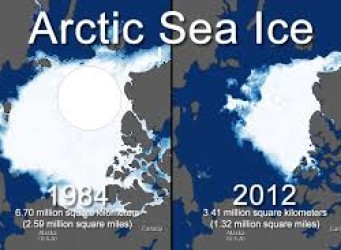I know that I am constantly pointing out how right I have been for years and years when it comes to predicting what would (and has) happened concerning the subjects which I cover. AND, that it would be worse than the conventional media was reporting. My kids tell me that I overdo that aspect of my messages. OK, I get it. But I just can’t help reporting when what I have warned you about actually comes to pass. Otherwise why would you give any credence to anything I say? I think it is incumbent upon me to support my credibility. And thus the theme of today’s message.
Simply put, those that have been warning that the projections upon which leaders are basing decisions are way to conservative and that the climate is unraveling much more quickly than the popular formulas indicate need to be taken much more seriously. And the data continues to prove it.
From the following article:
“Climate change is causing oceans to rise quicker than scientists’ most pessimistic forecasts”
““To put it plainly, they (the models) don’t hit the mark when we compare them to the rate of sea-level rise we see when comparing future scenarios with observations going back in time.””
“two-fifths of the Earth’s population…live near coastlines. Insured property worth trillions of dollars could face even greater danger from floods, superstorms and tidal surges. The research suggests that countries will have to rein in their greenhouse gas emissions even more than expected to keep sea levels in check.”
It’s bad enough that so much valuable property is located barely above the current ocean level but what are people thinking that are building huge new condos and resorts right on the beach??? Who is financing and investing in these developments? And who is buying them? Are they in the ozone? We are facing enough trouble with what we currently have and don’t need to exacerbate the coming disaster.
Ugh.
We gotta be smarter than this.
Sea Levels Are Rising Faster Than Most Pessimistic Forecasts
New research indicates economies have to emit even less carbon than budgeted to keep oceans from rising.
February 1, 2021
By Jonathan Tirone
Climate change is causing oceans to rise quicker than scientists’ most pessimistic forecasts, resulting in earlier flood risks to coastal economies already struggling to adapt.
The revised estimates published Tuesday in Ocean Science impact the two-fifths of the Earth’s population who live near coastlines. Insured property worth trillions of dollars could face even greater danger from floods, superstorms and tidal surges. The research suggests that countries will have to rein in their greenhouse gas emissions even more than expected to keep sea levels in check.
“It means our carbon budget is even more depleted,” said Aslak Grinsted, a geophysicist at the University of Copenhagen who co-authored the research. Economies need to slash an additional 200 billion metric tons of carbon — equivalent to about five years of global emissions — to remain within the thresholds set by previous forecasts, he said.

The warmer it gets, the faster the sea level rises. The sensitivity models of the future appear to be inconsistent with historical data.
The researchers built on the United Nation’s Intergovernmental Panel on Climate Change’s models, many of which only consider the last 150 years, by incorporating data going back several centuries. The new observations show about a half-meter of sea rise by the end of the century can now be expected with just a 0.5 degree Celsius rise in temperatures. Oceans could rise more than 1 meter at 2 degrees Celsius, a trajectory that will be easily passed under current climate policies.
“The models we are basing our predictions of sea-level rise on presently are not sensitive enough,” Grinsted said. “To put it plainly, they don’t hit the mark when we compare them to the rate of sea-level rise we see when comparing future scenarios with observations going back in time.”
The conclusions follow last month’s warning that rising temperatures have melted 28 trillion metric tons of ice — equivalent to a 100 meter thick sheet of ice covering the entire U.K. — making the worst-case climate scenarios more likely. The new methodology for tracking sea level change could help insurance companies, real estate developers and city planners erecting tidal-defense systems.
“The scenarios we see before us now regarding sea-level rise are too conservative – the sea looks, using our method, to rise more than what is believed using the present method,” Grinsted said, adding that his team at the Niels Bohr Institute is in touch with the IPCC about incorporating its results in next year’s sixth Assessment Report.



